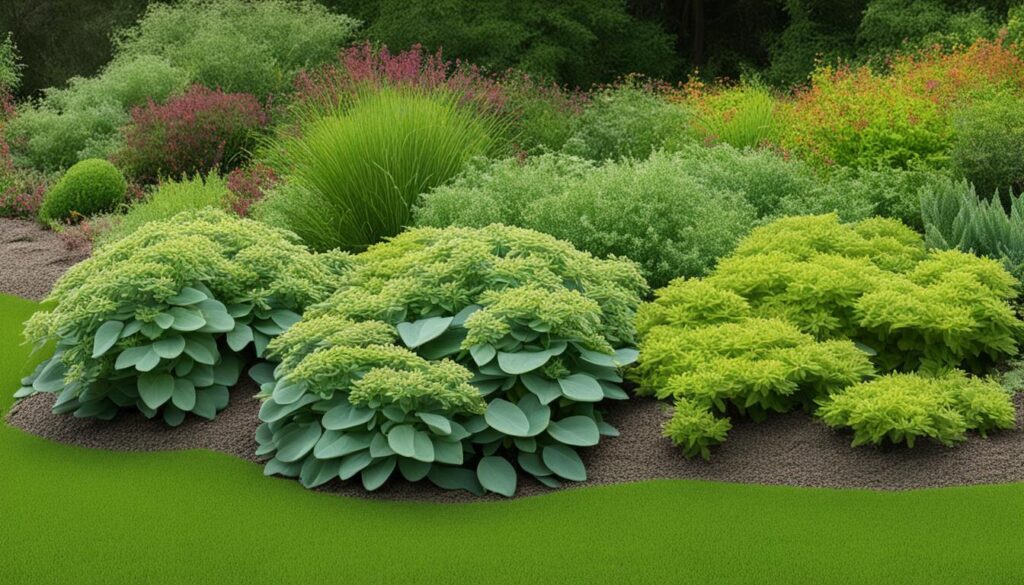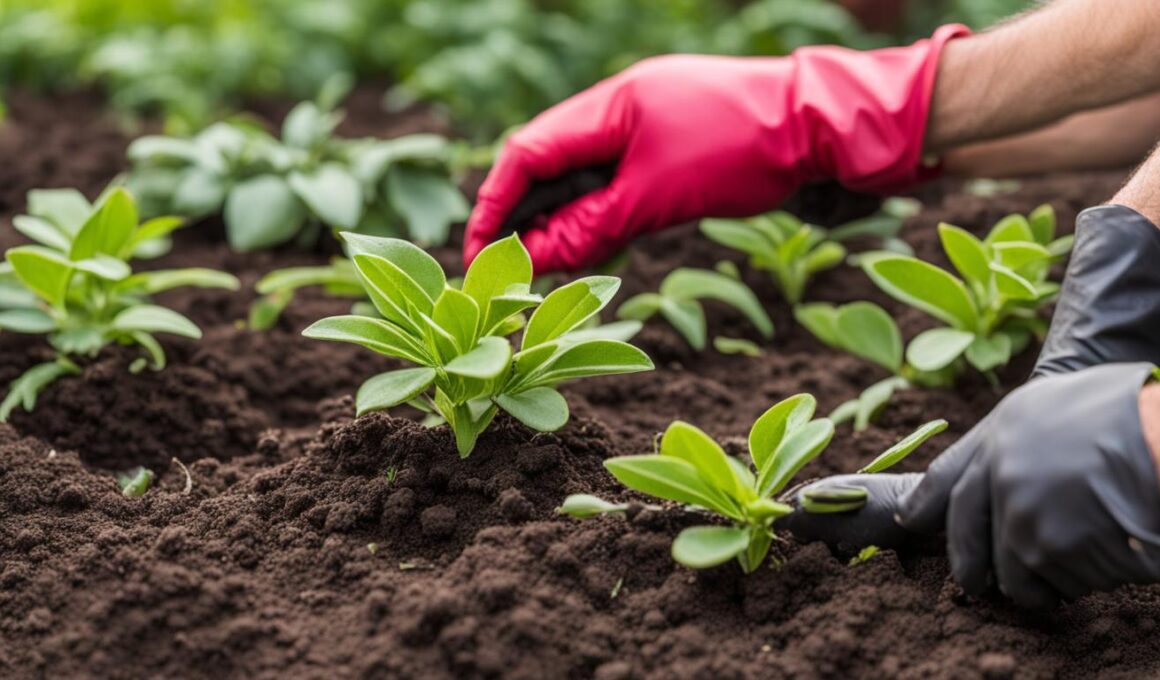Petty spurge (Euphorbia peplus) is a common weed that can invade your garden and landscape, causing damage to your plants. It is important to effectively get rid of petty spurge to maintain a healthy environment for your plants. Here are some tips on how to eliminate petty spurge from your garden.
Post Summary
- Petty spurge is a common weed that can damage your garden and plants.
- Identifying petty spurge is crucial for effective removal.
- Petty spurge grows quickly and spreads through its root system and seeds.
- The weed can have negative effects on your garden and attract ants.
- There are cultural and chemical control methods to remove petty spurge.
Identification of Petty Spurge
Petty spurge, also known as Euphorbia peplus, is a common weed that can quickly invade your garden and cause damage to your plants. To effectively remove petty spurge, it is important to be able to identify it. Here are some characteristics to help you spot petty spurge in your garden:
- Low-growing annual plant
- Native to Europe
- Dark green leaves that grow in pairs
- Red spots in the center vein
- Produces small pinkish flowers
- Hairy stems and leaves
By recognizing these characteristics, you can distinguish petty spurge from other plants in your garden and take appropriate actions for its removal.
Control
To effectively control the growth and spread of petty spurge, it is crucial to implement comprehensive management strategies. Regular monitoring and prompt hand-pulling of young plants can help prevent the weed from establishing a strong foothold. Mulching can also be used to suppress the growth of petty spurge by blocking sunlight and preventing seed germination.
Additionally, understanding the potential longevity of petty spurge seeds in the soil can guide your control efforts. Soil solarization, a technique that utilizes the sun’s heat to kill weed seeds, can be employed to reduce the seed bank in the soil and prevent future germination.
| Control Methods | Description |
|---|---|
| Hand-pulling | Regularly monitor and remove young petty spurge plants by hand. |
| Mulching | Apply a thick layer of organic mulch to suppress petty spurge growth and block seed germination. |
| Soil Solarization | Expose the soil to high temperatures by covering it with clear plastic, effectively killing petty spurge seeds and reducing the seed bank. |
By understanding the growth and spread of petty spurge and implementing appropriate control methods, you can effectively manage this weed and maintain a healthy garden.
Impact of Petty Spurge on Your Garden
Petty spurge can have detrimental effects on your garden and plants, causing damage and hindering their growth. Understanding the impact of petty spurge is crucial for effective weed management. Here are some key effects of petty spurge on your garden:
- Overgrowth in sparse turf areas: Petty spurge has the ability to overgrow areas with thin or sparse turf, creating an uneven and unsightly appearance.
- Invasion of open areas: This weed can quickly invade open areas in gardens and landscapes, outcompeting desirable plants and reducing their growth.
- Growth in sidewalk cracks: Petty spurge has a knack for growing in sidewalk cracks, creating an unattractive and potentially hazardous environment.
- Reduction in plant growth: The presence of petty spurge can hinder the growth of desirable plants, robbing them of essential nutrients, water, and sunlight.
- Poor quality turf: When petty spurge invades turf areas, it can disrupt the uniformity and quality of the grass, resulting in an unsightly and weakened lawn.
- Habitat for undesirable insects: Petty spurge serves as a habitat for undesirable insects and pests, attracting them to your garden and potentially causing further plant damage.
- Attracting ants: Ants are drawn to the seeds of petty spurge, which can lead to increased ant activity in your garden.
- Toxicity to animals: Ingesting petty spurge in large quantities can be toxic to certain animals, such as sheep, posing a risk to their health.
Now that you understand the impact of petty spurge on your garden, it’s important to take proactive measures to control its population and minimize its effects.

Cultural Control Methods for Petty Spurge Removal
When it comes to removing petty spurge from your garden, cultural control methods can play a significant role. These methods focus on preventive measures and physical techniques to minimize the growth and spread of this invasive weed. By implementing the following strategies, you can effectively control petty spurge and maintain a healthy garden.
Regular Monitoring and Hand Pulling
One of the key steps in controlling petty spurge is to regularly monitor your garden for new plants. Petty spurge can quickly reproduce and spread, so it’s important to catch and remove new plants as soon as possible. When hand pulling petty spurge, make sure to wear gloves to protect your skin from the sap, as it can cause irritation.
Mulching and Soil Solarization
Mulching is an effective technique to prevent the growth of petty spurge. By applying a layer of mulch, you can block sunlight from reaching the seeds and prevent them from germinating. Additionally, soil solarization can be used to reduce the number of petty spurge seeds in the soil. This technique involves covering the soil with a transparent plastic sheet to trap heat, effectively killing the seeds and reducing their viability.
Implementing these cultural control methods can significantly reduce the population of petty spurge in your garden. By regularly monitoring your garden, hand pulling new plants, mulching, and using soil solarization, you can effectively prevent the spread and growth of this invasive weed.
| Control Method | Description |
|---|---|
| Regular Monitoring and Hand Pulling | Monitor your garden regularly for new petty spurge plants and remove them by hand. Wear gloves to protect your skin. |
| Mulching | Apply a layer of mulch to block sunlight and prevent petty spurge seeds from germinating. |
| Soil Solarization | Cover the soil with a transparent plastic sheet to trap heat and reduce the number of petty spurge seeds in the soil. |
Chemical Control Options for Petty Spurge Removal
If cultural control methods are not sufficient to eliminate petty spurge from your garden, chemical control options can be considered. However, it’s important to proceed with caution and use herbicides responsibly to avoid damaging other plants in your garden.
Non-specific herbicides can be effective in targeting and eliminating petty spurge. These herbicides work by directly affecting the growth and development of the weed, ultimately leading to its demise. When using non-specific herbicides, it’s crucial to carefully follow the instructions on the label and apply the herbicide only to the targeted weed. This will help minimize any potential harm to desirable plants nearby.
Additionally, pre-emergent herbicides can be used to prevent the germination of petty spurge seeds. These herbicides create a barrier in the soil that inhibits the growth of weed seeds, effectively reducing the overall population of petty spurge in your garden. Again, it is important to read and follow the instructions provided by the manufacturer to ensure safe and effective use of the herbicide.
Remember, when using any chemical control method, always wear protective gloves and follow safety guidelines to minimize any potential risks. Additionally, consider the environmental impact of the herbicide and explore organic or natural alternatives if they align with your gardening preferences and goals.
Comparison of Herbicides for Petty Spurge Control
| Herbicide | Active Ingredient | Application Method | Effectiveness |
|---|---|---|---|
| Herbicide A | Active Ingredient A | Foliar Spray | High |
| Herbicide B | Active Ingredient B | Spot Treatment | Moderate |
| Herbicide C | Active Ingredient C | Soil Drench | Low |
Note: The effectiveness of herbicides may vary depending on various factors such as application timing, weather conditions, and the size and maturity of the petty spurge plants.
Preventing the Growth of Petty Spurge
Petty spurge can be a persistent weed that can be difficult to prevent due to its ability to grow in various conditions. However, there are steps you can take to minimize its growth and stop the spread of petty spurge in your garden.
1. Check Nursery Plants: Before transplanting any new plants into your garden, carefully check them for any signs of petty spurge. This will help prevent introducing the weed into uninfested areas.
2. Maintain a Thick and Healthy Turf: A thick and healthy turf can help prevent petty spurge from taking over sparse areas. Regularly fertilize your lawn, mow it at the appropriate height, and water it adequately to maintain its health and prevent the growth of petty spurge.
3. Mulch to Prevent Growth: Applying mulch to your garden beds can help prevent light from reaching the petty spurge seeds, inhibiting their germination and growth. Use a thick layer of organic mulch, such as wood chips or straw, to effectively suppress the weed’s growth.
4. Avoid Introduction of Seeds: Be cautious when introducing new plants or soil to uninfested areas of your garden. These can potentially carry petty spurge seeds, leading to the growth of the weed. Keep a close eye on any imported plants and ensure that the soil or potting mix is free from petty spurge seeds.
By following these preventive measures, you can avoid the growth and spread of petty spurge in your garden, maintaining a weed-free environment for your plants and ensuring their healthy growth.
| Preventive Measures | Effectiveness |
|---|---|
| Checking nursery plants | High |
| Maintaining a thick and healthy turf | High |
| Mulching to prevent growth | Medium |
| Avoiding introduction of seeds | Medium |
Other Spurge Weeds to Look Out For
When it comes to invasive weeds in your garden, petty spurge is just the tip of the iceberg. There are several other spurge weeds that can cause similar issues and invade your precious plants. It’s important to be able to identify these common spurges and effectively remove them from your garden to maintain a healthy environment.
These common spurges, similar to petty spurge, can take over your garden if left unchecked. Ground spurge, creeping spurge, garden spurge, nodding spurge, and thyme-leafed spurge are some examples of pesky spurge weeds that you should be on the lookout for.
Post Summary
- Identifying and removing spurge weeds is essential for maintaining a healthy garden.
- Ground spurge, creeping spurge, garden spurge, nodding spurge, and thyme-leafed spurge are common types of spurge weeds.
- These weeds can cause similar issues as petty spurge and should be effectively removed.
- Regular monitoring, hand pulling, and mulching are effective methods for controlling spurge weed growth.
- Prevent the introduction of spurge weed seeds to uninfested areas to minimize their spread.
Spurge Weed Identification
Spurge weed (Euphorbia maculata), also known as spotted spurge, is a common invasive weed that can be found in various locations, including sidewalk cracks, walkways, and thin lawns. It has a lacy network of thin stems with small oval blue-green leaves and produces tiny flowers that can be pink or green. This weed can quickly spread and take over your garden if left uncontrolled.
One of the key characteristics of spurge weed is its distinctive milky sap, which is released when the plant is damaged. This sap can cause skin irritation in some people, so it is advisable to wear gloves when handling spurge weed. The plant also produces small, seed-filled capsules that can easily scatter and germinate, contributing to its rapid spread.
When identifying spurge weed, look out for its low-growing habit and sprawling stems that can form dense mats. The leaves are typically arranged in pairs along the stems and have a smooth texture. The flowering period for spurge weed is usually from late spring to early fall, making it easier to spot during this time. Taking proactive measures to identify and remove spurge weed can help prevent it from taking over your garden and competing with your desired plants.
Common Characteristics of Spurge Weed:
- Low-growing habit
- Sprawling stems that form dense mats
- Leaves arranged in pairs along the stems
- Smooth-textured leaves
- Distinctive milky sap
- Small oval blue-green leaves
- Tiny pink or green flowers
- Small seed-filled capsules
By familiarizing yourself with the characteristics of spurge weed and implementing effective removal methods, such as hand pulling or the use of herbicides, you can successfully control its spread and protect your garden from this invasive weed.
Conclusion
Removing petty spurge from your garden is essential for maintaining a healthy environment for your plants. By identifying the weed, understanding its growth and spread, and implementing cultural and chemical control methods, you can effectively get rid of petty spurge. Additionally, taking preventive measures and being aware of other spurge weeds can help ensure a weed-free garden.
In summary, here are the key control methods for removing petty spurge:
- Regularly monitor and hand pull new plants.
- Wear gloves to protect your skin from the sap.
- Mulch to prevent light from reaching the seeds.
- Use soil solarization to reduce the number of seeds in the soil.
- Consider chemical control options if necessary, following the instructions on the herbicide label.
- Take preventive measures to minimize the growth of petty spurge.
By following these methods, you can effectively control and eliminate petty spurge, creating a healthier and more vibrant garden.
Will Missing a Day of Watering Grass Seed Affect Petty Spurge Growth?
When it comes to watering grass seed, every day counts. Missing a day could affect petty spurge growth and lead to uneven and patchy areas in your lawn. To ensure the best results, follow the guidelines mentioned in the watering grass seed article for a healthy and lush lawn.
FAQ
What is petty spurge?
Petty spurge is a low-growing annual weed that can invade gardens and landscapes. It has dark green leaves, small pinkish flowers, and hairy stems and leaves.
How does petty spurge spread?
Petty spurge spreads through its extensive branching root system and by producing thousands of tiny seeds that can remain dormant in the soil for up to eight years.
What are the negative effects of petty spurge on gardens?
Petty spurge can overgrow sparse turf areas, invade open areas in gardens and landscapes, reduce the growth and quality of desirable plants, serve as a habitat for undesirable insects, and attract ants with its seeds.
How can I remove petty spurge from my garden?
You can remove petty spurge by hand pulling new plants, wearing gloves to protect your skin, mulching to prevent seed growth, using soil solarization, and using herbicides if necessary.
Are there any other spurge weeds that I should be aware of?
Yes, other common spurge weeds include ground spurge, creeping spurge, garden spurge, nodding spurge, and thyme-leafed spurge.
How can I identify spurge weed?
Spurge weed, also known as spotted spurge, has lacy stems with small oval blue-green leaves and produces tiny pink or green flowers.
How can I prevent the growth of petty spurge?
You can prevent the growth of petty spurge by checking nursery plants for any signs of the weed before transplanting them, maintaining a thick and healthy turf, mulching to prevent spurge growth, and avoiding the introduction of seeds to uninfested areas.
What should I do if I need to use chemical control for petty spurge?
If necessary, you can use non-specific herbicides on petty spurge, but precautions must be taken to avoid damaging other plants. Pre-emergent herbicides can also be used to prevent germination.
How do I effectively get rid of petty spurge?
By identifying petty spurge, understanding its growth and spread, implementing cultural and chemical control methods, and taking preventive measures, you can effectively eliminate petty spurge from your garden.
What are the similar weeds to petty spurge?
Other similar spurge weeds include ground spurge, creeping spurge, garden spurge, nodding spurge, and thyme-leafed spurge.











